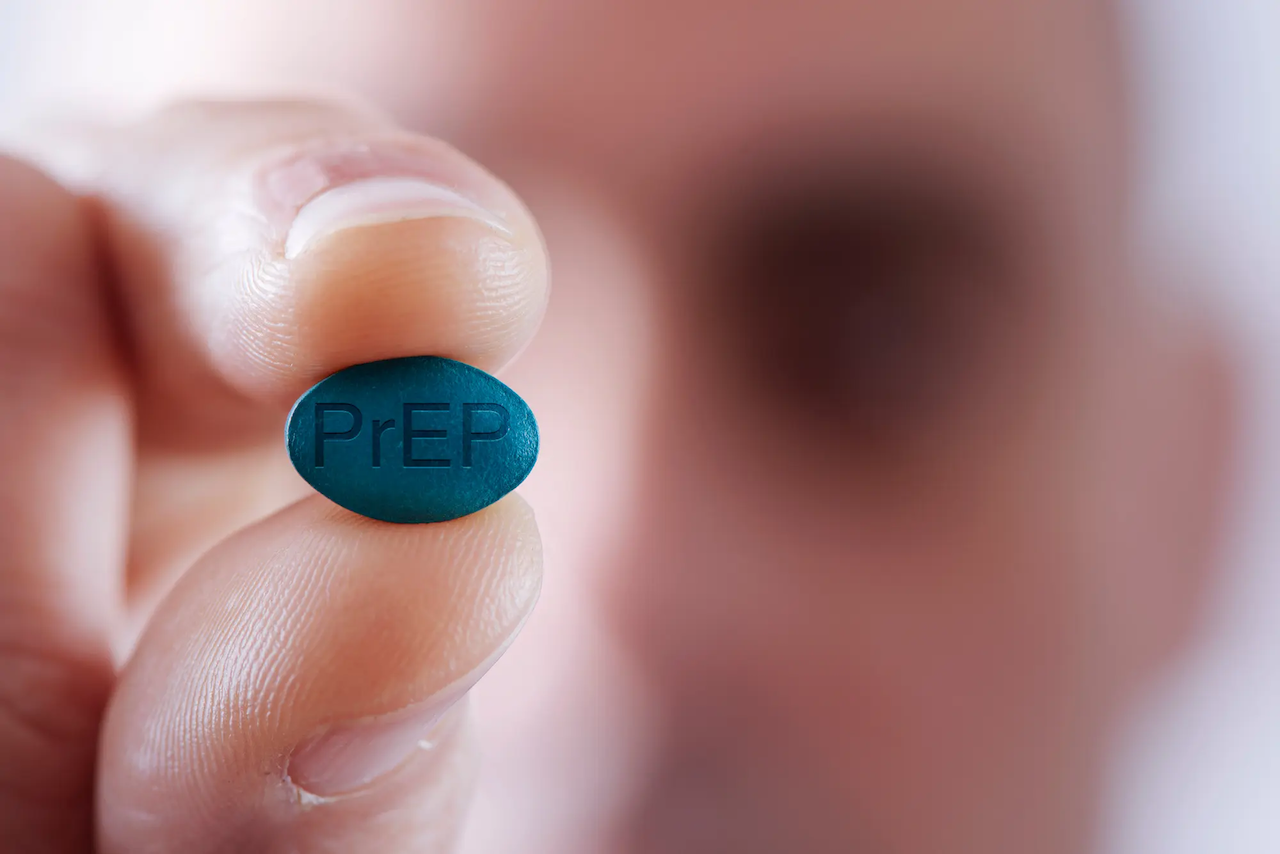News
Article
Need for PrEP Support Services Persists Among Latino MSM
Author(s):
Among Latino men who have sex with men (MSM), access to and use of pre-exposure prophylaxis (PrEP) remain at suboptimal levels, despite this population of individuals having disproportionately high rates of diagnosed HIV in the United States.
Young man with a PrEP pill | Image Credit: nito – stock.adobe.com

The results of a new analysis of the uptake and retention of pre-exposure prophylaxis (PrEP) among Latino men who have sex with men (MSM) treated at a federally qualified health center (FQHC) in El Paso, Texas, demonstrate a high rate of PrEP discontinuation, primarily after a first follow-up visit, according to Journal of Racial and Ethnic Health Disparities.1
These findings indicate 2 principal areas on which to focus: enhancing longer-term PrEP persistence and improving support for restarting PrEP.
Access to and use of PrEP remain at suboptimal levels among Latino MSM, despite this population of individuals having disproportionately high rates of HIV in the United States, and El Paso has the third highest prevalence of HIV among MSM, at 28.5 cases per 100 MSM. This study is among the few that have quantified persistence along the PrEP continuum among a cohort of predominately Latino MSM, the study investigators highlighted.
The 292 patients included in this retrospective cohort analysis were eligible for PrEP at the FQHC (Centro San Vicente) between January 30, 2019, and August 15, 2021; 91% (n = 235) were Latino. PrEP discontinuation was defined to be more than 120 days between PrEP visits, and outcomes of interest were median time to first PrEP discontinuation and PrEP adherence at 3 months.
Any PrEP discontinuation was seen among 70% of the patients who were prescribed and took the antiviral medication classified as a nucleoside/nucleotide reverse transcriptase inhibitors,2 and within this, the study investigators saw 3 primary categories of PrEP discontinuation
- Early discontinuation and never restarted: clients who did not return to the clinic after their initial PrEP visit (27% of those with any discontinuation and 19% of the overall study population)
- Early discontinuation and later restarted: clients who discontinued after that initial visit but eventually returned (21% and 14%, respectively)
- Later discontinuation: clients who returned after their initial visit but then discontinued PrEP (52% and 37%); this group also was further classified as “later discontinuation, never restarted” and “later discontinuation, later restarted”
In addition, an analysis of those with later discontinuation showed that 56% subsequently restarted PrEP, with the authors noting, “We calculated these categories among the majority subset of Latino MSM and found that they were nearly identical to the overall patient population.”
For those in the other 2 categories of discontinuation, those classified as “early discontinuation, never restarted,” eventually relinked back to PrEP care after a median 199 days compared with 169 days among those classified as “later discontinuation, later restarted.”
The median time to first discontinuation was 202 (95% CI, 179-266) days. Among the Latino MSM, this time was slightly longer, at 250 (95% CI, 179-267) days.
Most individuals in this analysis were aged 25 to 29 years (28%) or 35 years and older (29%), cisgender men (90%), and Latino (91%) or non-Latino White (6%). One percent each were non-Latino Black and other non-Latino, 95% lived in El Paso, and 57% lacked insurance coverage. The top 3 indications for PrEP were MSM (89%), having multiple sex partners over the past 3 months (53%), and a history of sexually transmitted infections (40%). At their first study visit, 14% tested positive for syphilis.
Overall, 82% (95% CI, 76%-87%) of the study population was still on PrEP at the 3-month mark after treatment initiation, but this dropped to 55% (95% CI, 46%-62%) by 6 months after initiation.
“In this study of a PrEP program within an FQHC at the US-Mexico border, we found that 3-month retention on PrEP was high in this primarily Latino MSM patient population, but that the majority of patients discontinued PrEP at least once,” the study authors underscored. “Most studies among predominately Latino MSM report on cross-sectional measures of the disproportionately low PrEP uptake and coverage, but this study is among the few that have quantified persistence along the PrEP continuum among a cohort of predominately Latino MSM.”
They added that their findings show higher 3- and 6-month retentions compared with previous studies, which report a retention range of 37% to 50% at 3 months.3-5
With the Centro San Vicente clinic considered a safe space for the LGBTQ+ community, the authors posited that the higher PrEP retention rates they saw may be due to the trust and confidentiality the clinic has forged with its patients, as well as services being provide in Spanish. This is especially important in light of knowledge that such barriers as government mistrust, PrEP-related stigma, economic inequities, and heterosexism may impede PrEP retention among Latino MSM.
“Our findings suggest a need for culturally tailored interventions to increase longer-term PrEP retention and support PrEP restarts among Latino MSM,” the authors concluded. “More research is needed to understand the nuances of PrEP discontinuation to shape programs that support patients continuing and restarting PrEP.”
References
1. Tiley T, Anaya G, Gallegos PA, Castaneda R, Khosropour CM. Pre-exposure prophylaxis use and discontinuation in a federally qualified health center in a Mexico-US border city. J Racial Ethn Health Disparities. Published online October 3, 2023. doi:10.1007/s40615-023-01807-y
2. Ghoshal M. What is HIV PrEP and how does it work? Healthline. February 28, 2023. Accessed October 3, 2023. https://www.healthline.com/health/hiv-aids/hiv-prevention/hiv-prep#bottom-line
3. Goodman A, Patten L, Castillo-Mancilla J, Zimmer S, Madinger N, Frasca K. Factors associated with retention and adherence in a comprehensive, diverse HIV pre-exposure prophylaxis clinic. AIDS Res Hum Retroviruses. 2022;38(4):327-335. doi:10.1089/AID.2021.0130
4. Zucker J, Carnevale C, Richards P, et al. Predictors of disengagement in care for individuals receiving pre-exposure prophylaxis (PrEP). J Acquir Immune Defic Syndr. 2019;81(4):e104-e108. doi:10.1097/QAI.0000000000002054
5. Zhang J, Li C, Xu J, et al. Discontinuation, suboptimal adherence, and reinitiation of oral HIV pre-exposure prophylaxis: a global systematic review and metaanalysis. Lancet HIV. 2022;9(4):e254-e268.




